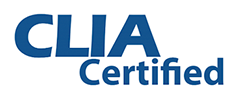In order to evaluate ovarian function or ovarian reserve, clomiphene citrate challenge test (CCCT) has been used in fertility practice over the years. CCCT can better predict individual response to ovarian stimulation compared to FSH test alone and may be used to help determine the treatment protocol. In controlled ovarian stimulation cycles, this test can be used along with age and previous history to develop the FSH stimulation protocol. CCCT also will help predict the prognosis for a successful conception.
Clomiphene Citrate (CC-brand names Clomid or Serophene) is an oral medication that helps in stimulating the ovaries indirectly. Some women may experience certain side effects such as bloating, abdominal discomfort, mood swings, visual changes or headaches.
Typically CCCT is done by measuring FSH and estradiol levels on Days 2-4 with a pelvic ultrasound and a repeat FSH test on Day 10. Clomid is taken at 100 mg orally for five days starting on day 5 of the menstrual cycle. If the FSH test on Day 10 is greater than 10 (some laboratories may have a different cut off value depending on the assay used) CCCT is considered to be positive, suggesting that there is decreased ovarian reserve.
Before starting CCCT, in some cases an ovarian cyst may be found on ultrasound. The vast majority of them are benign “functional cysts” which will disappear in the next cycle. In these cases, Dr. Bayrak recommends repeating the ultrasound in the following cycle to determine if the cyst is persistent or has disappeared. Beginning CC with the presence of an ovarian cyst may stimulate its growth. If cyst is persistent in the following cycle, patients may be placed on birth control pills, observed or alternatively a cyst aspiration may be performed if the cyst appears as a simple follicular cyst.
Patients can prefer to have timed intercourse during a CCCT cycle or undergo intrauterine insemination when ovulation is detected. The cycle then becomes not only diagnostic but also therapeutic and in most cycles of CCCT couples attempt conception. Although CCCT has been used as a diagnostic tool historically in most unexplained infertility cases, Dr. Bayrak prefers to utilize ultrasound examination of ovaries and assessment of the antral follicle count. The best predictor of IVF outcome has been documented to be basal antral follicle count. If information from FSH and estradiol levels is added on to the antral follicle count, an estimation of the egg reserve can be made accurately.










